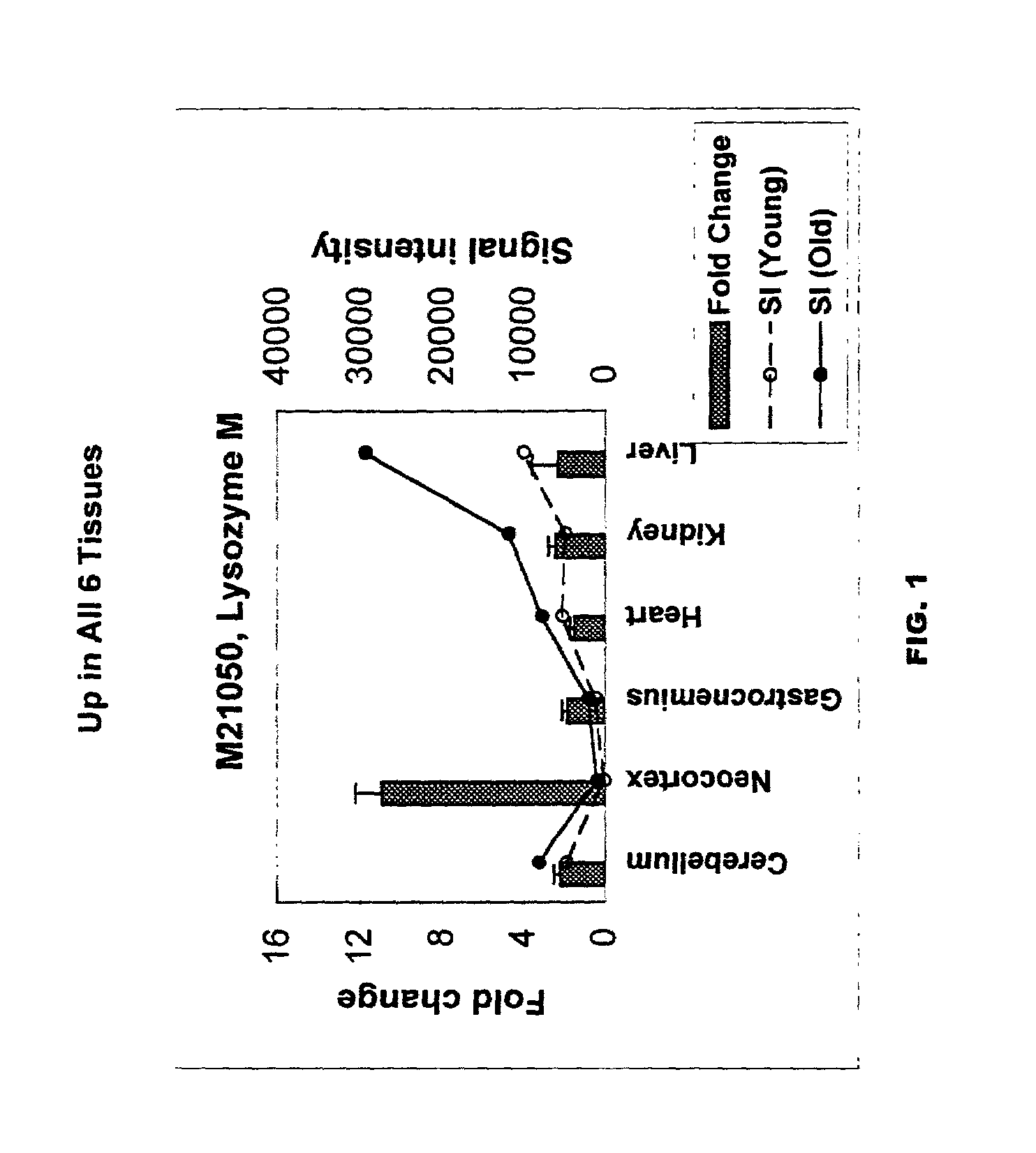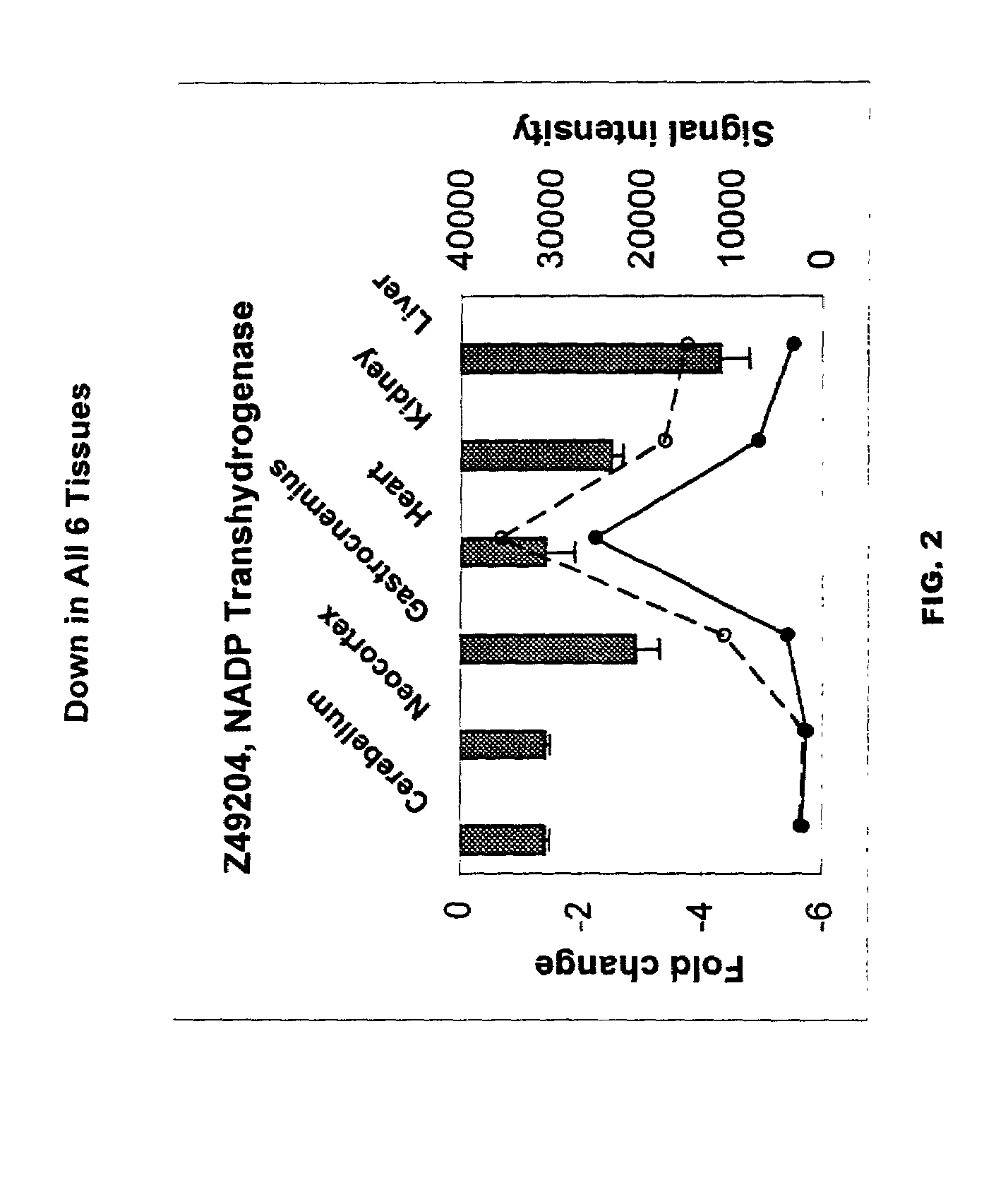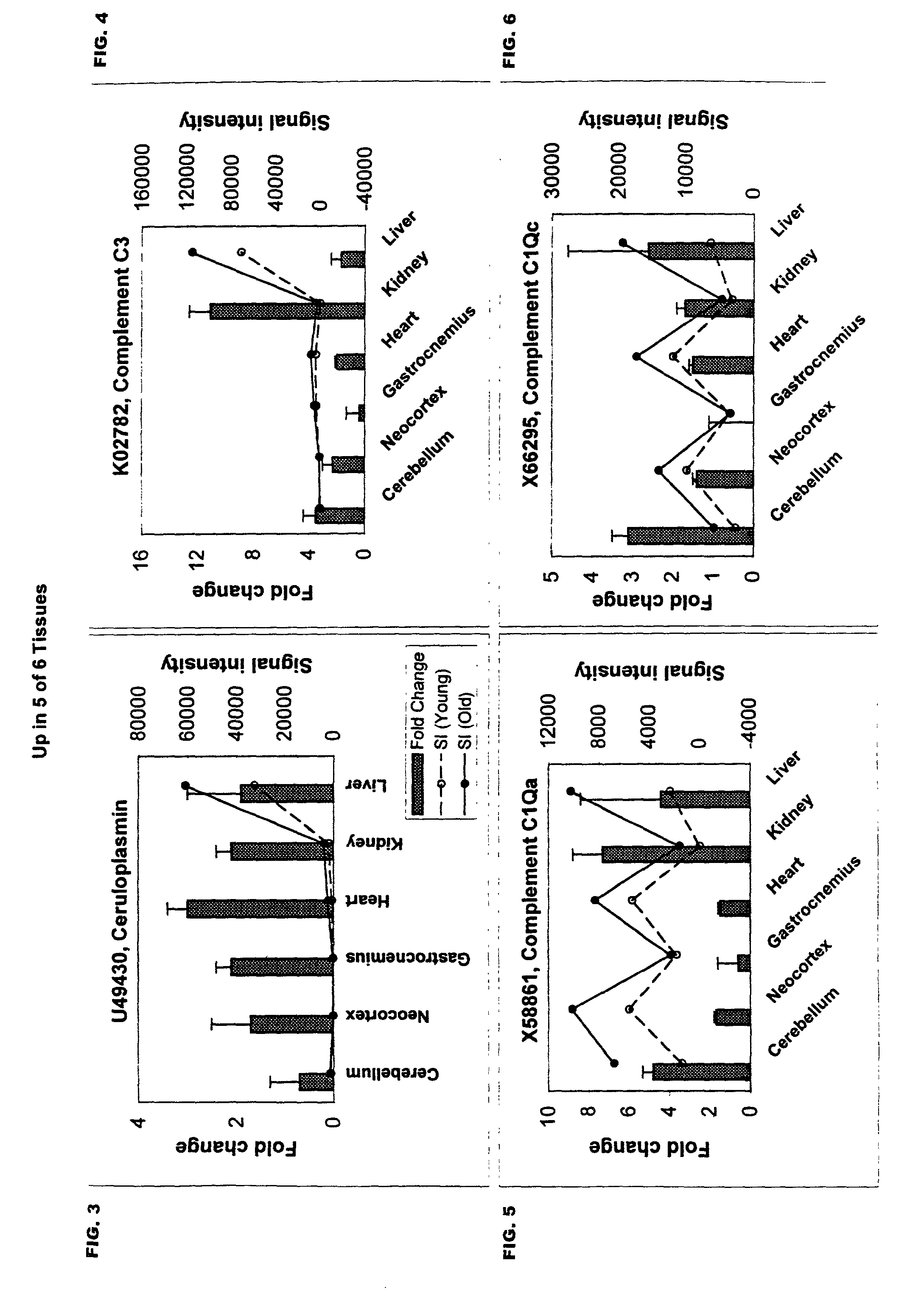Methods of screening for compounds that inhibit expression of biomarker sequences differentially expressed with age in mice
a technology of biomarker sequence and screening method, which is applied in the field of screening for compounds that inhibit the expression of biomarker sequence with age in mice, can solve the problems of complex organismal senescence, lack of biological age molecular markers, and difficulty in elucidating mechanisms and testing interventions
- Summary
- Abstract
- Description
- Claims
- Application Information
AI Technical Summary
Benefits of technology
Problems solved by technology
Method used
Image
Examples
examples
Methods
[0070]A. Animal Ages, Husbandry and Dietary Manipulations.
[0071]All aspects of animal care were approved by the appropriate committees and conformed with institutional guidelines. Details on the methods employed to house and feed male C57 BL6 (“B6”) mice, a commonly used model in aging research with an average lifespan of ˜30 months, were recently described (Pugh, et al., 1999). Briefly, mice were purchased from Charles River Laboratories (Wilmington, Mass.) at 1.5 months of age. After receipt in Madison, the mice were housed singly in the specific pathogen-free Shared Aging Rodent Facility at the Madison Va. Geriatric Research, Education and Clinical Center, and provided a nonpurified diet (PLI 5001 [Purina Labs, St. Louis, Mo.]) and acidified water ad libitum for one week. Each mouse in the control group was fed 84 kcal / week of the diet (TD91349 [Teklad, Madison, Wis.]).
[0072]B. Gene Expression Analysis.
[0073]All experiments use three mice per experimental group (i.e., youn...
PUM
| Property | Measurement | Unit |
|---|---|---|
| time | aaaaa | aaaaa |
| concentration | aaaaa | aaaaa |
| concentration | aaaaa | aaaaa |
Abstract
Description
Claims
Application Information
 Login to View More
Login to View More - R&D
- Intellectual Property
- Life Sciences
- Materials
- Tech Scout
- Unparalleled Data Quality
- Higher Quality Content
- 60% Fewer Hallucinations
Browse by: Latest US Patents, China's latest patents, Technical Efficacy Thesaurus, Application Domain, Technology Topic, Popular Technical Reports.
© 2025 PatSnap. All rights reserved.Legal|Privacy policy|Modern Slavery Act Transparency Statement|Sitemap|About US| Contact US: help@patsnap.com



